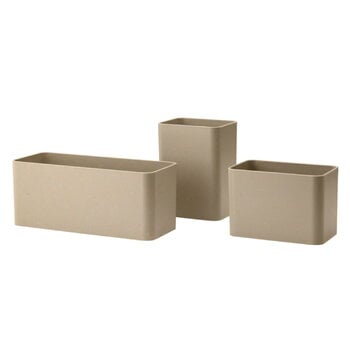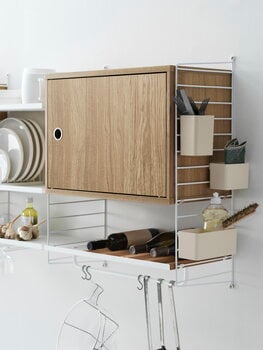The String organizer set features three convenient plastic pockets that can be attached to the String System side panels. They are perfect for storing small objects and accessories and keeping them easily within reach.
String System is a flexible shelving system that Swedish architect Nils Strinning designed in 1949. The signature ladder-like side panels can be combined with shelves, magazine shelves, work desks, folding tables, chests and cabinets to form a system that best suits your needs. The timeless and minimalist design of String System is perfect for both contemporary homes and offices.








